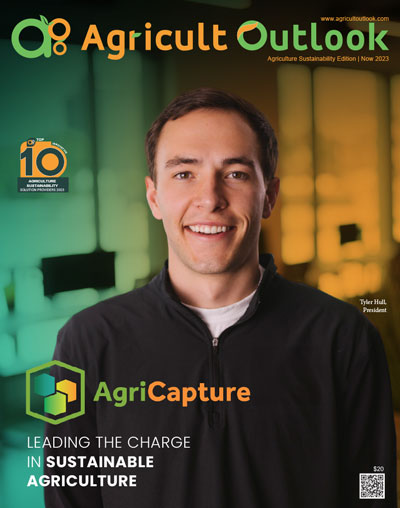Asia’s agriculture sector is a cornerstone of the region’s economy and employment, feeding billions. Yet, its agricultural might comes with a burden: a mountain of waste – in food and agriculture.
India, according to the Ministry of New and Renewable Energy (MNRE), generates about 500 million tonnes of agricultural and agro-industrial leftovers. China – the global agricultural giant – produces over 900 million tonnes. Recognising the concerns that come with this waste, and its potential, China works to reuse most of the waste as bio-fuel and other materials. However, the stark reality in India is that most of the agri-waste gets burned as it is unused.
This waste problem extends beyond crop residues to food waste as well. India throws away as much as 30% of its fresh produce, valued at $13 billion. China accounts for over 40% of Asia’s food waste. In South-East Asia alone, each person wastes an average of 100 kg of food every year. The numbers are nothing short of shocking and people have begun to consider it a pervasive problem.
Compounding this issue is the problem of plastic waste, much of which comes from food packaging and single use plastics. Our current global food system – the linear “take-make-consume-dispose” model has been labelled the key culprit, degrading the environment and depleting precious resources. With Asia’s population set to reach a mind boggling 5.3 billion by 2050, the current system is about as sustainable as a wax statue in the hot outdoors.
As we grapple with mounting population and environmental concerns, innovators across the continent and the world have turned to an age-old concept with a modern twist: the closed-loop system. Also known as the “cradle-to-cradle”, this promising model is a regenerative system aimed at eliminating waste and minimising the need for new raw materials constantly, by keeping resources in use for as long as possible.
In this context, sustainable packaging emerges as a key component. Agri-waste is coming up to be a promising alternative to plastics in food and beverage packaging, service ware, and more. Marrying agri-residue with food waste can pave the way for eco-friendly, sustainable packaging solutions, offering a single innovation to tackle a two-pronged problem.
In a closed-loop system, packaging should do more than covering; it should prevent spoilage, extend shelf-life, and reduce waste, which sustainable packaging has the potential to do with the choice of materials.
Mushroom packaging using mycelium, edible packaging from seaweed and gelatin, and compostable pulp packaging from recycled paper are revolutionising packaging, aligning with the principles of a circular economy.
Economically, too, it opens up new opportunities. The market for biodegradable packaging in Asia-Pacific is expected to grow at a compound annual growth rate (CAGR) of 13.5% from 2021 to 2026. For farmers, selling what was previously considered waste can offer additional income. In India, farmers selling rice husks for packaging material production have seen an average income increase of 15-20%.
This boost is significant from a gender perspective too, as women constitute over 50% of the agricultural workforce in the continent. Creating new income opportunities from this system can improve the economic status and empowerment for women farmers.
Denmark has made a bold move by introducing the world’s first carbon tax on agriculture to hit its 2030 climate targets. The revenue from this tax will be reinvested in production transformation, climate technology, and green initiatives, all with a focus on reducing methane emissions from farming. This initiative not only helps Denmark tackle its emissions but also sets an inspiring example for other nations.
Asia leads in agricultural production, and so it has the potential to lead in agricultural sustainability too. China and India produce a whopping 75% of global agricultural residue paper-pulp packaging, positioning them at the forefront for sustainable packaging production within the next 3-5 years.
Beyond sustainability and use, packaging solutions should also enhance the consumer’s experience. Smart packaging has emerged as a cutting-edge innovation, integrating various technologies to provide real time insights into the food we consume.
One example is Time-Temperature Indicators, which are embedded within the packaging in the form of labels or devices to monitor the temperature history of perishable goods, ensuring that they’ve been stored and transported under optimal conditions. This helps to prevent spoilage and check that it’s in quality condition. Should a temperature breach occur, the indicators will signal it through a change in colour.
Similarly, Freshness Indicators provide visual signals of the food’s safety and quality. The sensors react to the changes in the product and change colour to alert consumers if the food is no longer fresh.
Another interesting development is the use of QR codes. Upon scanning, a user can see the history of the product- from farm to store, and interact with the product more than they usually would. It can also tell one that the food is actually fresh to consume, reducing reliance on “best buy” dates which are problematic and contribute to the wastage of food that is perfectly fine to consume.
Other examples of innovative interactive packaging include cereal boxes with games for kids to play printed on it, packaging with chalkboard coating that invites the user to write or draw on it, or food packaging that can be unfolded and used as a plate during mealtime. These innovations not only improve user experience, but also highlight the growing sustainability and versatility in modern packaging.
As we look to the future, it’s clear that sustainability and technology will drive innovation in packaging, enhancing functionality, environmental stewardship, and consumer interest. The closed-loop system offers a great framework to build upon. By reimagining packaging as part of a circular economy, we can create products that benefit both consumers and the environment.
However, adopting this approach widely will require collaboration across industries as well as shifts in consumer behaviour. The benefits of a cleaner environment and enhanced food security will make it worthwhile.
With such sustainable alternatives, India’s, and other countries’ ambitious goals of eliminating single-use plastics by 2050 suddenly seems a lot more achievable.




